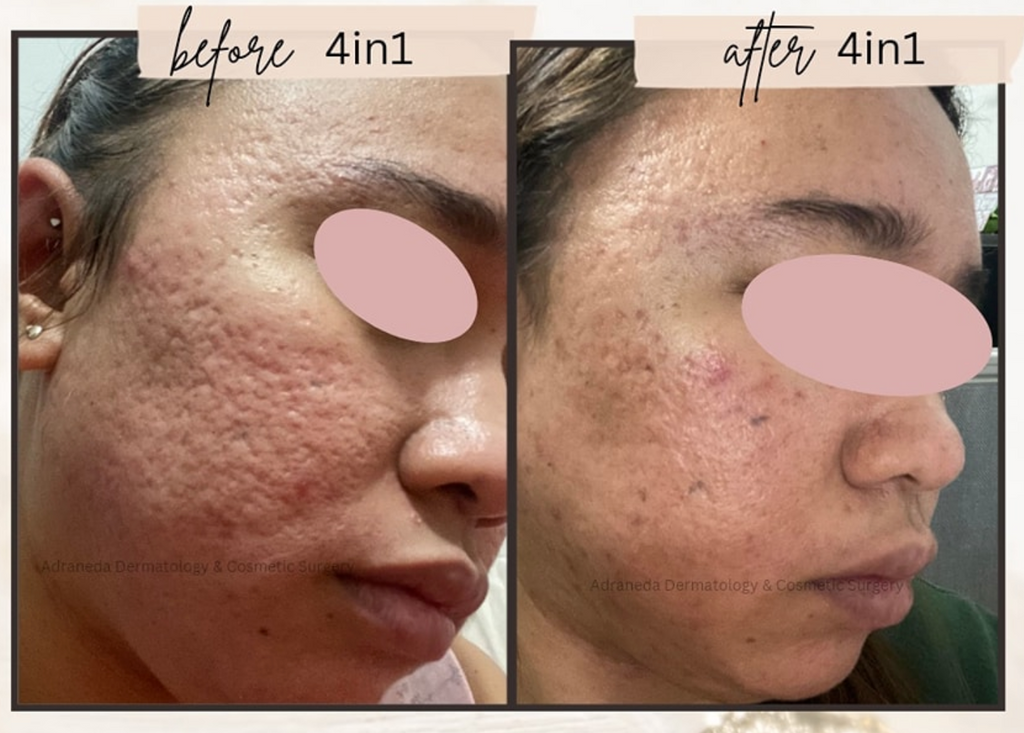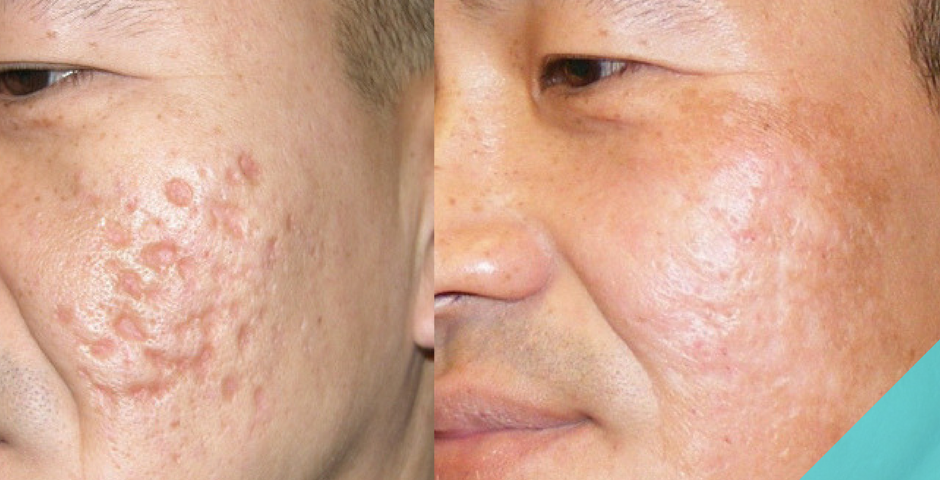Acne and Acne Scars Treatment: Specialist Solutions for Lasting Results
Acne and Acne Scars Treatment: Specialist Solutions for Lasting Results
Blog Article
Understanding the Numerous Skin Problem and Efficient Treatment Alternatives for Acne Scars
Acne marks stand for a complicated interaction of skin conditions that considerably effect people' self-confidence and overall skin wellness. As we discover the landscape of acne scar management, it ends up being apparent that the journey toward more clear skin might involve even more than simply topical services.
Sorts Of Acne Scars

In comparison, hypertrophic scars arise from an overflow of collagen during the healing procedure, resulting in elevated areas on the skin. These scars are often firm and can vary in shade, often showing up red or darker than the surrounding skin.
Comprehending these kinds of acne scars is important for establishing an efficient therapy plan - acne scars. Choices may consist of chemical peels, laser treatment, microneedling, or dermal fillers, tailored to the certain scar type. An extensive examination with a dermatologist can help establish one of the most appropriate intervention, taking right into account the person's skin kind, scar intensity, and overall skin health
Reasons For Acne Scarring
Marking occurs as an outcome of the body's natural recovery action to inflammation and injury caused by acne sores. When acne types, it triggers an inflammatory response, resulting in the launch of different cytokines and development variables that promote healing. Nevertheless, this process can often lead to excessive tissue formation or poor repair service, causing scars.
The key reasons for acne scarring consist of the intensity of the acne itself, duration of the sores, and private skin types. Severe inflammatory acne, such as blemishes and cysts, is more probable to cause scarring because of much deeper tissue damages. Furthermore, incorrect handling of acne sores, such as picking or pressing, can aggravate tissue injury and inflammation, increasing the possibility of scarring.
Hereditary predisposition likewise plays a considerable function; people with a household history of scarring go to a greater risk. In addition, skin kind and color can influence scar development, as darker skin tones might experience post-inflammatory hyperpigmentation, while lighter skin might establish atrophic marks.
Ultimately, understanding these causes is essential in managing acne and alleviating the potential for scarring.

Therapy Options for Scarring
Efficient therapy choices for acne scarring vary relying on the kind and severity of the marks. Normally classified right into atrophic, hypertrophic, and keloid scars, these problems call for tailored methods for optimal outcomes.
For atrophic marks, which are identified by a loss of cells, therapies such as chemical peels, microdermabrasion, and laser treatment are commonly utilized. These techniques advertise skin revival and promote collagen manufacturing, therefore boosting skin appearance. Subcision, a minimally invasive treatment, can additionally be reliable by separating coarse bands underneath the skin.
Hypertrophic and keloid marks can be much more challenging to treat. Alternatives consist of corticosteroid injections to decrease swelling and squash the scars. In many cases, cryotherapy or laser treatment might be suggested to lessen their appearance.
Surgical options are readily available for extreme scarring, where excision or skin grafting may be needed. It's necessary for individuals to talk to a dermatologist to assess their certain scar type and discuss the most suitable treatment strategy. Incorporating multiple treatments usually produces the finest outcomes, making sure that each client's distinct skin disease is attended to properly.
Natural Remedy and All-natural Solutions
Natural services and natural remedy can supply an available technique for people looking for to boost the appearance of acne marks (acne and acne scars treatment). Different active ingredients discovered in the home kitchen area have actually demonstrated potential advantages in boosting skin texture and acne treatment for sensitive skin promoting recovery

Another reliable choice is lemon juice, which acts as a natural exfoliant and can lighten hyperpigmentation. It ought to be utilized meticulously, as it may cause photosensitivity. Oatmeal masks are also beneficial; their gentle exfoliation can assist get rid of dead skin cells while comforting irritability.
Crucial oils, such as tea tree oil and lavender oil, can better sustain scar recovery because of their antimicrobial properties. It is important to perform a patch examination before using any remedy to make sure there are no unfavorable responses. These natural solutions can be a corresponding method in the trip to diminish acne scars.
Protecting Against Future Scarring
Taking on an aggressive method to skincare can significantly lower the threat of developing future acne marks. One of the vital approaches is to manage acne effectively as it emerges. This entails utilizing non-comedogenic skincare items and drugs prescribed by skin specialists that target acne without irritating the skin. Routine cleaning, peeling, and hydration can aid keep skin health and avoid clogged up pores.
In addition, staying clear of the lure to choose or press acne lesions is critical, as this can result in inflammation and subsequent scarring. Rather, individuals need to concentrate on applying topical therapies that promote healing and decrease inflammation. Active ingredients such as salicylic acid, benzoyl peroxide, and retinoids are understood for their effectiveness in managing acne and lessening marks.
Sun security is another vital part; exposure to UV rays can darken marks and hinder healing. Therefore, using a broad-spectrum sun block daily can reduce these effects - acne scars.
Lastly, keeping a healthy diet plan abundant in antioxidants and remaining hydrated assistances skin regrowth. By implementing these preventive actions, individuals can significantly decrease their risk of future scarring and promote overall skin wellness.
Final Thought
In conclusion, a thorough understanding of acne scars, including both hypertrophic and atrophic kinds, is necessary for effective therapy strategies. Customized interventions, consisting of professional therapies and natural remedy, can dramatically enhance skin appearance and texture. Safety nets likewise play a critical function in decreasing future scarring. Consultation with a skin link doctor stays important to create personalized techniques that consider private skin types and scar intensity, eventually boosting the efficiency of mark administration methods.
Acne scars stand for an intricate interplay of skin conditions that dramatically influence individuals' self-confidence and total skin health. The two main groups of acne scars are atrophic and hypertrophic marks. These marks are more categorized right into three subtypes: ice pick marks, which are deep and slim; boxcar scars, which are broader and have well-defined edges; and rolling her explanation marks, which develop a wave-like look due to unequal skin texture.
A complete examination with a skin specialist can assist identify the most appropriate treatment, taking into account the person's skin kind, scar extent, and overall skin wellness.
Examination with a skin specialist remains important to create personalized techniques that take into consideration individual skin types and mark severity, inevitably improving the efficacy of mark management strategies.
Report this page